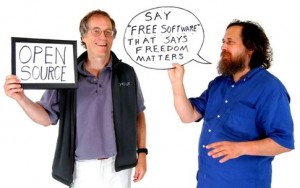GNOME (GNU Network Object Model Environment), là một tập hợp các công cụ và môi trườngmàn hình nền có thể chạy trên hầu hết các hệ điều hành phổ biến hiện nay như Linux, BSD, MacOS X, Solaris cũng như Windows.
Đây là một dự án phần mềm mã mở, có liên hệ mật thiết và chia sẻ chung triết lý về phần mềm mãmở với dự án GNU (GNU is Not Unix), nó là một bộ phận cấu thành không thể thiếu của hệ điềuhành mở GNU/Linux từ những ngày đầu phát triển.
Phiên bản GNOME 1.0 ra đời năm 1999, được phát triển bởi Miguel de Icaza và Federico Menavới những thành phần cơ bản như: trình quản lý tệp, trình quản lý cửa sổ được xây dựng tự bộ thưviện GTK+ có giấy phép LGPL đảm bảo tính tự do của nó như là một đối trọng với Qt và KDE ởthời điểm năm 1999.
GNOME 2.0 tập trung vào tính dễ sử dụng của môi trường desktop. Ngôn ngữ lập trình đơn giản,thân thiện giúp cộng đồng phát triển dễ dàng xây dựng các ứng dụng của mình trên nền GTK+.
Thay đổi lớn nhất trong GNOME 3 là “Vỏ GNOME”. Đây là giao diện người dùng cốt lõi củaGNOME 3, là kết quả của ba năm hun đúc ý tưởng về việc cải tạo giao diện trong 2008 UserExperience Hackfest và thời gian thực thi các phát triển đó bởi William Jon McCann (Redhat).
Nói ngắn gọn, GNOME 3 sang trọng hơn so với các phiên bản trước và đẹp xứng tầm, sáng ngangvới Mac OS X Leopard hay Windows 7 ngay cả khi chưa sử dụng compiz (một trình quản lý cửa sổphức hợp).
Vào thời điểm ý tưởng “cải cách” GNOME 2 được hình thành, giao diện của GNOME còn khá sơkhai và khá giống Windows 98 trong khi Microsoft đã cho ra đời Windows Vista và Apple đã trìnhlàng Mac OS X Leopard. Thay thế, đuổi kịp giao diện “bắt mắt” của hai hệ điều này chỉ là mộttrong những mục tiêu của GNOME 3. Một trong những triết lý của GNOME 3 là KISS (Keep itsimple, stupid. Tạm dịch: Càng đơn giản càng tốt). Đây cũng là triết lý chung của các hệ điều hànhhọ Unix giúp cho nó luôn “sạch”, nhỏ ngọn, ổn định cùng thời sử dụng và không bị phình to(bloated) như một số hệ điều hành mã đóng khác.
Với GNOME 3 Shell, hệ thống sẽ có giao diện thoáng hơn,đơn giản hơn, giúp người dùng tậptrung vào công việc của mình với nhiều phiên làm việc dễ dàng tương tác với nhau.
Trong GNOME 3, “Activities” (họat động) và “System status erea” (khu vực trạng thái của hệthống) giúp người dùng theo dõi họat động của hệ thống dễ dàng hơn; “Dash” chứa danh sáchnhững phần mềm đang chạy; khả năng kéo thả các cửa sổ giữa các phiên làm việc; Tổ hợp phím Alt-Tab quản lý các chương trình đang chạy dễ hơn; Biểu tượng cũng như các phần tử của giao diệnđồ họa đều được thiết kế lại so với GNOME 2, thích hợp hơn với các thiết bị máy tính bảng và điệnthoại di động.
Thông tin về GNOME
Trang chủ: http://www.GNOME3.org/
Thử nghiệm: http://www.GNOME3.org/tryit.html
Đôi điều về thiết kế: http://live.GNOME.org/ThreePointZero/DesignHistory
Nhóm Việt hóa GNOME họat động tại: http://du-an-most.hanoilug.org/MostWiki
Nguyễn Vũ Hưng – HanoiLUG
P.S. Các bạn đừng quên tham dự GNOME 3 Release Party tại Hà Nội [1] và tại TpHCM [2].
[1] http://vn.fedoracommunity.org/2011/03/31/gnome-3-release-party/
